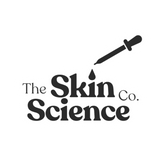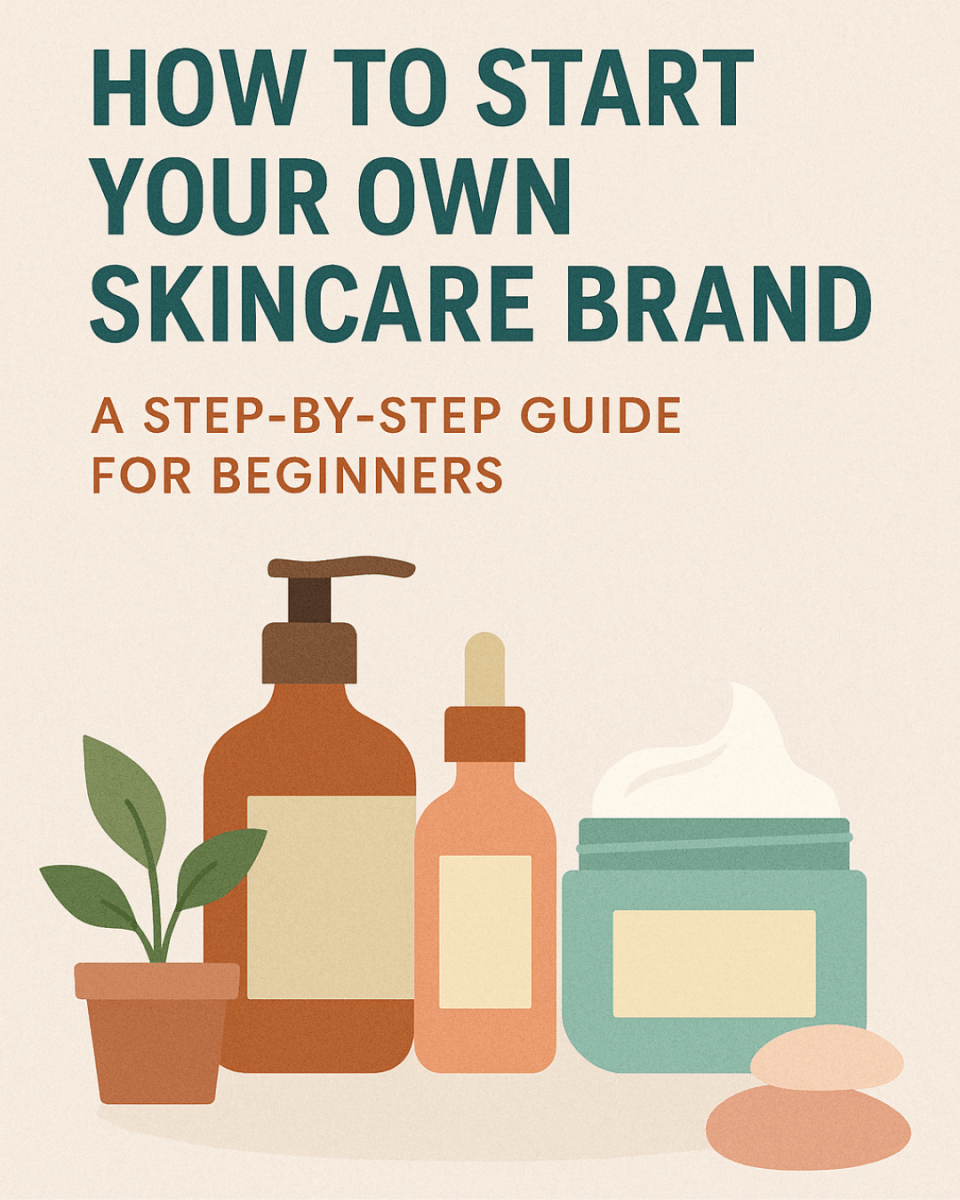Embarking on the journey to create your own skincare brand can be both exciting and overwhelming. This comprehensive four-part guide will walk you through every phase of starting a skincare business – from initial concept and research to product development, branding, launch, and growth. Each part of the guide delves into practical steps, tips, and exercises to help you build a brand that is authentic, compliant, and primed for success. Let’s dive in!
Part 1: Laying the Foundation
Starting with “Why” – Defining Your Motivation and Vision: Every successful skincare brand begins with a clear purpose. Before anything else, take time to discover your “why.” Ask yourself: Why do I want to start a skincare line? What personal passion or gap in the market is driving me?
-
Reflect on Personal Passion: Perhaps you fell in love with skincare through personal experience or saw transformative results from certain ingredients. Maybe you struggled with a skin issue and want to help others with the same problem. Jot down these experiences.
-
Identify a Market Gap: Consider if there’s a need not being met. Did you notice products that irritate sensitive skin, or a lack of inclusive options for certain complexions or ages? A strong “why” often combines passion with an unmet need.
-
Envision the Impact: Think long-term. Do you want to champion clean beauty or sustainability? Maybe your goal is to empower customers with confidence. Defining the impact you wish to have on customers or the industry will guide your brand’s direction.
Action Exercise: Grab a notebook and write out a mission statement for yourself. Include your core motivation (e.g., “to create gentle, effective skincare for sensitive skin”) and the vision of what success looks like (e.g., “a community of confident individuals with healthy skin”). This personal mission will serve as your compass throughout your journey.
Researching the Skincare Industry – Know the Landscape: Before formulating products or designing logos, you need to understand the playground you’re entering. The skincare industry is vast and dynamic, with new trends and products emerging constantly. Thorough research will help you spot opportunities and avoid pitfalls.
-
Market Size and Growth: Get a sense of the industry’s scale and trajectory. For example, the global skincare market is booming – it’s expected to reach $204.61 billion by 2030, with much of the recent growth driven by independent and niche brands. This means new players (like you!) have room to succeed as consumer preferences shift toward indie products.
-
Trends and Shifts: Follow beauty publications, dermatology blogs, and influencers to catch the latest trends. Are consumers gravitating towards K-beauty routines, minimalist “skinimalism,” organic ingredients, or tech-driven skincare devices? Tools like Google Trends can help validate if a trend is gaining traction or fading. Tip: Be cautious of “fad ingredients” or flash-in-the-pan trends. If everyone is suddenly hyping a rare herb or exotic oil, consider whether it aligns with a long-term need. As one expert notes, if you chase every hot ingredient, “by the time you actually hit the market, that trend might be over”. Focus on enduring trends or truly innovative ideas.
-
Target Audience Insights: Who are the main consumers in the segment you’re interested in? Skincare lovers range from teens battling acne to new moms looking for self-care, to men entering grooming, and seniors seeking anti-aging solutions. Each group has distinct needs and buying habits. Read market research reports or beauty forums to learn what each demographic cares about (e.g., natural ingredients, price point, quick results, fragrance preferences). This will later help in crafting your products and marketing.
-
Competitive Analysis: Identify key players already serving your intended audience. List 5-10 existing skincare brands that target similar customers or product types. What are they doing well? Do they focus on luxury packaging, budget-friendly prices, unique ingredients, or a strong community? Also, note their weaknesses or gaps – maybe their products all have a strong fragrance and you could offer a fragrance-free alternative, or perhaps they lack diversity in marketing. Order some of their products if you can, experience their purchasing process, and read customer reviews. Look for frustrations customers voice (“I wish this moisturizer was less greasy” or “the packaging leaks”) – those are opportunities for you to do better
Action Exercise: Create a simple spreadsheet for competitor research. Columns can include Brand Name, Target Customer, Product Range, Price Range, Notable Strengths, Notable Weaknesses. Filling this out will reveal where your idea can stand out. Also jot down any ideas this research sparks – for instance, “Lots of anti-aging brands for women, but few focus on men – opportunity?” or “All the current options for acne are drying – what about a gentle alternative?”
Choosing Your Niche – Find Your Sweet Spot: In an industry crowded with options, narrowing your niche gives you an edge. Your niche is the specific corner of the market that your brand will passionately serve. It should align with your “why” and have enough audience demand to be sustainable.
-
Combine Passion with Market Need: Think about the intersection of what excites you and what customers are looking for. For example, if you’re passionate about botanical ingredients and notice a lack of effective natural products for eczema, that could be a niche: botanical eczema relief skincare. Make sure the niche both fuels your enthusiasm and addresses a real problem or desire for consumers.
-
Examples of Skincare Niches: Here are a few ways brands successfully niche down:
-
By Skin Concern: Products specifically for acne-prone skin, eczema relief, anti-aging, rosacea-friendly routines, etc. These address a defined problem.
-
By Ingredient Philosophy: Vegan and cruelty-free skincare, all-organic formulations, fragrance-free dermatological formulas, or “clean beauty” lines with no certain chemicals. (Note: if you go “all-natural” without synthetic preservatives, be mindful – such products may have shorter shelf lives.)
-
By Lifestyle or Values: Sustainable, zero-waste packaging skincare for eco-conscious consumers; halal or kosher certified products; gender-inclusive or gender-neutral skincare; or a line celebrating a certain cultural heritage’s beauty secrets.
-
By Format or Innovation: Maybe you focus only on solid, waterless skincare (like bars and balms) to reduce packaging waste, or multi-use products (a tint that’s both skincare and makeup).
-
By Demographic: Skincare for a specific age or community – teens, new moms, men’s skincare, or perhaps products formulated especially for melanated skin tones or cancer survivors recovering their skin health.
-
-
Underserved Audiences: Look for groups who aren’t getting much attention from big brands. Indie brands often win by serving niches like inclusive cosmetics for all skin tones (an area where larger brands historically fell short) or products tailored to communities with unique needs. Ask: who is not being spoken to in current marketing? That gap might be your niche.
-
Long-Term Viability: Ensure your niche isn’t just a fleeting craze. If it’s tied to a trend (like a specific ingredient), consider whether it has staying power or if you can pivot as trends change. Ideally, base your niche on a problem (dry skin, acne, etc.) rather than a single trendy ingredient, since problems tend to persist and need ongoing solutions. You can always incorporate popular ingredients in a way that fits your broader mission.
Action Exercise: Write a short description of your chosen niche. For instance: “A vegan, cruelty-free skincare line focused on calming redness and irritation for sensitive skin.” This sentence becomes a guiding star – anytime you consider a new product or marketing angle, you check it against this statement to ensure you stay focused. If you find it difficult to write, you might need to narrow your idea further (or if it feels too restrictive, broaden slightly). Aim for a niche that is specific but not so narrow that only a handful of people would be interested.
Real-World Check: At this stage, it’s wise to validate that your foundation – your “why” and niche – resonates beyond just yourself. Talk to potential customers (friends, family, or online skincare communities) about your idea. For example, if your niche is skincare for athletes (sweat-induced acne, sun exposure, etc.), speak with some sports enthusiasts about their skincare struggles. This can give you confidence that you’re on the right track or reveal tweaks needed before you move forward.
By the end of Part 1, you should have: a clear personal motivation statement, an understanding of the skincare market landscape (trends, competition, audience), and a well-defined niche that hits the sweet spot between your passion and market opportunity. With this solid foundation, you’re ready to start crafting a brand that brings your vision to life.
A strong foundation is the first step – just like carefully crafted soap bars, your brand’s base should be solid yet unique. In Part 1, you discovered your core motivation and identified a niche to call your own.



